#Church Architecture Firms
Explore tagged Tumblr posts
Text
How Commercial Architecture Firms Breathe Life into Architectural Construction Drawings
Buildings aren't just concrete and steel; they're living, breathing testaments to the dreams of businesses and the meticulous artistry of commercial architecture firms. These firms weave together the threads of vision, practicality, and technical expertise, transforming architectural construction drawings into tangible spaces that drive success.

Imagine a bustling restaurant, the aroma of sizzling steaks dancing through the air as laughter fills the room. Or picture a sleek, modern office where innovation sparks in every corner. These vibrant environments aren't spontaneous; they're meticulously planned and brought to life by the collaborative efforts of architects, engineers, and construction professionals.
At the heart of this process lies the architectural construction drawing, a symphony of lines, annotations, and symbols that speak the language of builders. These drawings are more than blueprints; they're roadmaps, meticulously detailing every component – from the foundation's depth to the precise placement of light fixtures.
But turning these intricate drawings into reality requires a skilled conductor – a commercial architecture firm. Firms like BBA-A LLC, with their decades of experience and unwavering commitment to excellence, bridge the gap between imagination and execution.
From Concept to Completion: The Architect's Toolkit
The journey begins with a spark – a client's vision for their ideal space. BBA-A's architects act as skilled listeners, capturing the essence of the client's needs and aspirations. They then translate these intangible concepts into tangible designs, weaving together functionality, aesthetics, and budget considerations.
State-of-the-art technology plays a crucial role in this process. 3D modeling software allows clients to virtually walk through their future space, tweaking details and ensuring the design aligns perfectly with their vision. BBA-A leverages this technology to not only enhance communication but also identify potential challenges before they materialize on the construction site.
Building More Than Just Walls: The Importance of Collaboration
Architectural construction drawings are more than just lines on paper; they're the foundation for a collaborative endeavor. BBA-A fosters a culture of open communication, bringing together architects, engineers, and construction teams to ensure seamless execution.
Structural engineers translate the architect's vision into a structurally sound framework, while mechanical, electrical, and plumbing (MEP) engineers ensure that the building's lifeblood – from electricity to ventilation – flows efficiently. Construction professionals, the hands that translate drawings into reality, provide invaluable insights and expertise throughout the process.
Beyond Bricks and Mortar: The Impact of Commercial Architecture
The work of commercial architecture firms extends far beyond the construction site. The spaces they create have a profound impact on the lives of those who use them. A well-designed restaurant can foster vibrant communities, while a thoughtfully crafted office can boost productivity and employee morale.
BBA-A recognizes this responsibility. They strive to create spaces that are not only functional and beautiful but also sustainable and environmentally responsible. Their commitment to green building practices minimizes the environmental footprint of their projects, ensuring a healthier future for generations to come.
From Vision to Brick and Mortar: A Legacy of Excellence
Architectural construction drawings are the silent language of commercial architecture firms, translating dreams into reality. But it's the human element – the dedication, expertise, and collaborative spirit – that truly breathes life into these blueprints.
BBA-A LLC stands as a testament to this artistry. With a legacy of excellence spanning generations, they have transformed countless visions into thriving commercial spaces, leaving a lasting impact on the communities they serve. So, the next time you step into a vibrant restaurant or a buzzing office, remember the invisible hand of the commercial architecture firm, the silent conductor who orchestrated the symphony of lines and transformed a drawing into a living, breathing space.
#commercial architects dallas#commercial architectural design#commercial architecture firms#architectural construction drawings#construction#texas#commercial architecture texas#bba architects#commercial architect mckinney#church architecture firms
1 note
·
View note
Text
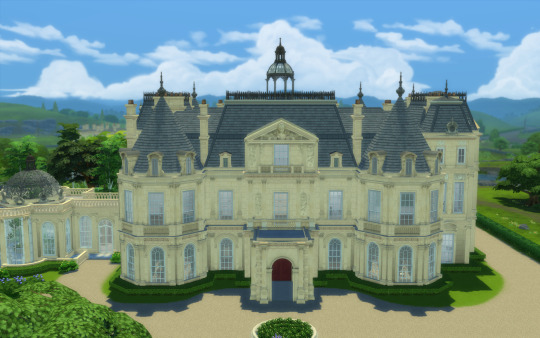
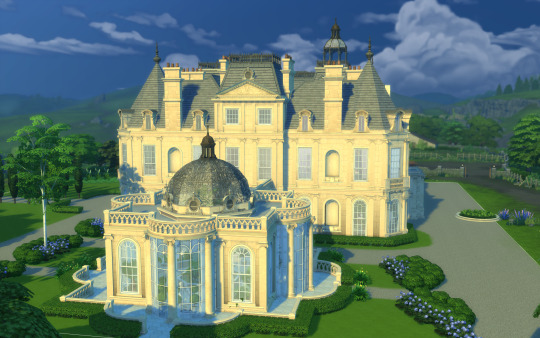
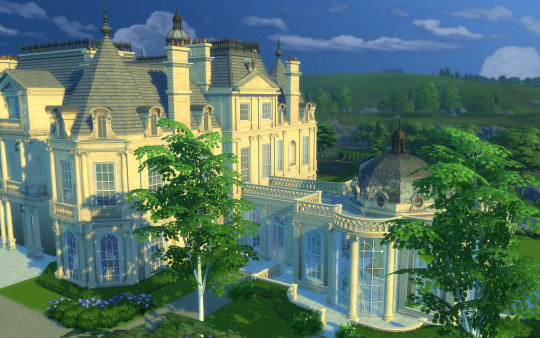

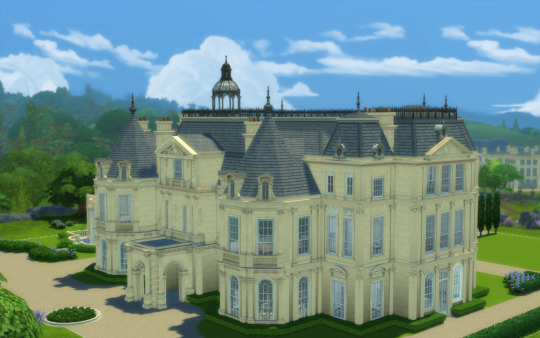

Halton House
Hace un instante
Hi guys!!
I'm sharing Halton House. This is the 15th building for my English Collection and the second Rothchild house I recreated.
I decorated some interiors for reference, but I could not find the real distribution of the house, so I just worked with pictures I found.
You might be familiar to the central hall and stairs, as they are the ones used for Bridgerton House in the series.
I chose to build the version with the conservatory, as I think this was a glory lost to time.
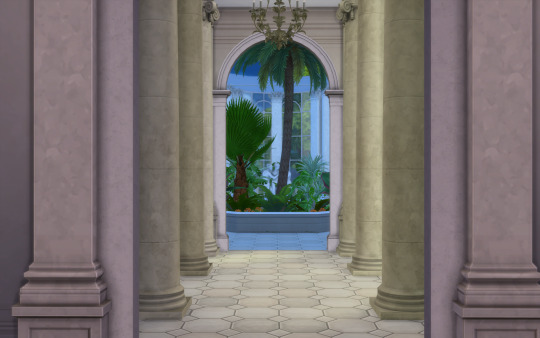

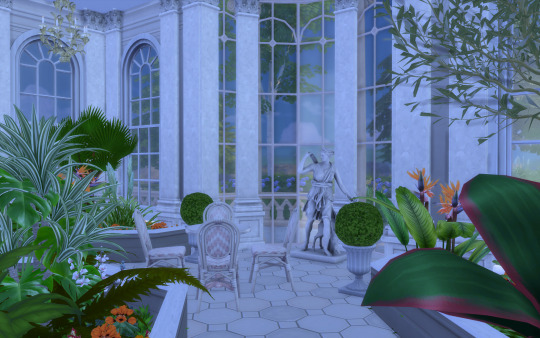
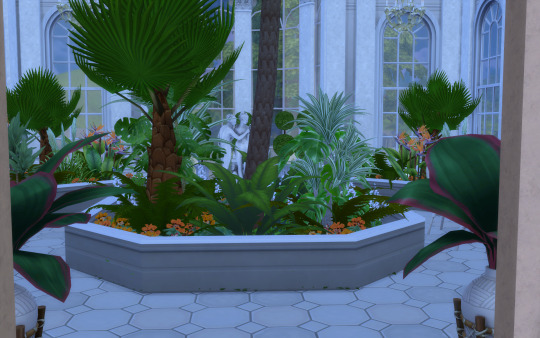

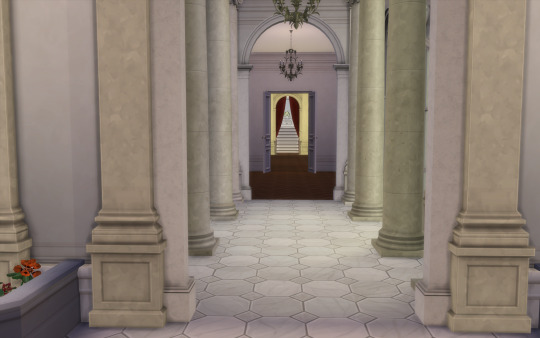
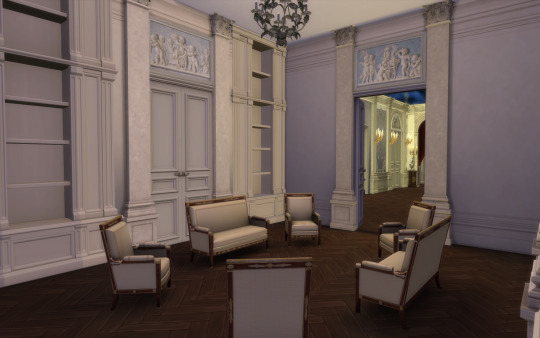
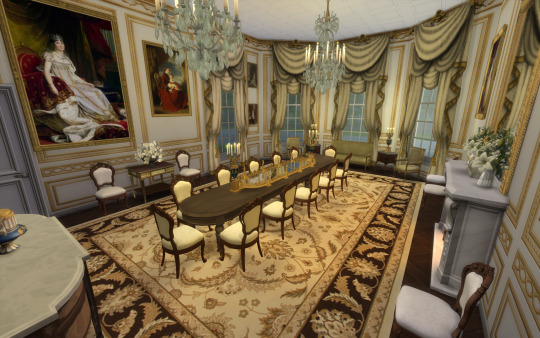
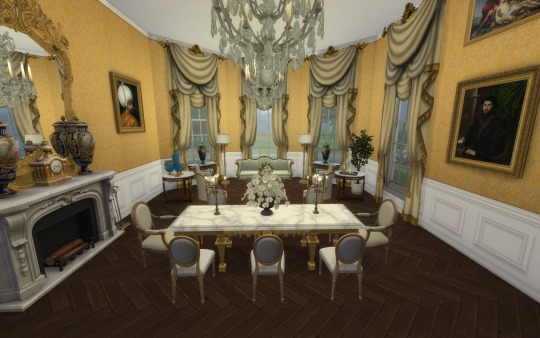



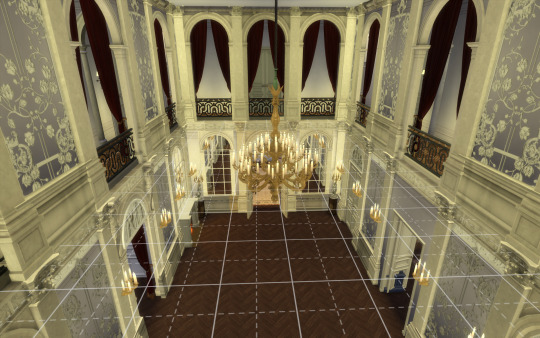
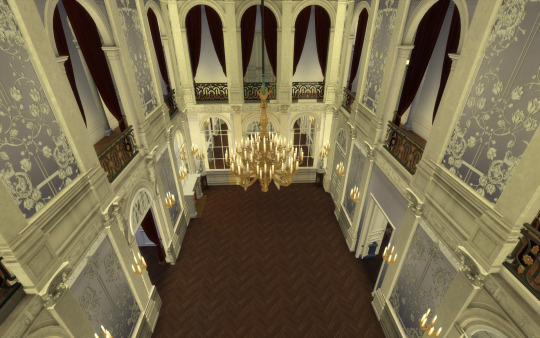


History of the house: Halton House is a country house in the Chiltern Hills above the village of Halton in Buckinghamshire, England. It was built for Alfred Freiherr de Rothschild between 1880 and 1883. It is used as the main officers' mess for RAF Halton and is listed Grade II* on the National Heritage List for England.
There has been a manor house at Halton since the Norman Conquest, when it belonged to the Archbishop of Canterbury. Thomas Cranmer sold the manor to Henry Bradshaw, Solicitor-General in the mid-16th century. After remaining in the Bradshaw family for some considerable time, it was sold to Sir Francis Dashwood in 1720 and was then held in the Dashwood family for almost 150 years.
The site of the old Halton House, or Manor, was west of the church in Halton village. It had a large park, which was later bisected by the Grand Union Canal. In June 1849 Sir George Dashwood auctioned the contents and, in 1853, the estate was sold to Lionel Freiherr de Rothschild.
Lionel then left the estate to his son Alfred Freiherr de Rothschild in 1879. At this time the estate covered an approximately 1,500-acre (610-hectare) triangle between Wendover, Aston Clinton, and Weston Turville.
It is thought the architect was William R. Rodriguez (also known as Rogers), who worked in the design team of William Cubitt and Company, the firm commissioned to build and oversee the project in 1880. Just three years later the house was finished.
The house was widely criticised by members of the establishment. The architect Eustace Balfour, a nephew of the Marquess of Salisbury, described it as a "combination of French Chateau and gambling house", and one of Gladstone's private secretaries called it an "exaggerated nightmare".
At Halton all were entertained by Alfred Freiherr de Rothschild. However, Halton's glittering life lasted less than thirty years, with the last party being in 1914 at the outbreak of World War I. Devastated by the carnage of the war, Freiherr de Rothschild's health began to fail and he died in 1918. Alfred had no legitimate children, so the house was bequeathed to his nephew Lionel Nathan de Rothschild. He detested the place and sold the contents at auction in 1918. The house and by now diminished estate were purchased for the Royal Air Force by the Air Ministry for what was even then a low price of £115,000 (equivalent to £7.08 million in 2023 pounds).
Architecture
For the style of the house Alfred was probably influenced by that of plans for the nearly completed Waddesdon Manor, the home of Baron Ferdinand de Rothschild, his brother-in law. While not so large there is a resemblance, but other continental influences appear to have crept in: classical pediments jut from mansard roofs, spires and gables jostle for attention, and the whole is surmounted by a cupola. The front of the house features a porte-cochère. A Rothschild cousin described it as: "looking like a giant wedding cake".
If the outside was extravagant, the interior was no anti-climax. The central hall (not unlike the galleried two-storey hall at Mentmore Towers) was furnished as the "grand salon". Two further drawing rooms (the east and west) continued the luxurious theme. The dining and billiards rooms too were furnished with 18th-century panelling and boiseries. The theme continued up the grand, plaster panelled staircase to the bedrooms. The whole was furnished in what became known as "Le Style Rothschild", that is, 18th-century French furniture, boulle, ebony, and ormolu, complemented by Old Masters and fine porcelain.
A huge domed conservatory known as the winter garden was attached to the house.
For more info: https://en.wikipedia.org/wiki/Halton_House
------------------------------------------------------------------------------

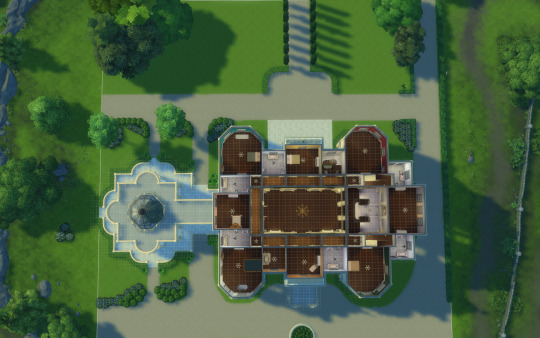
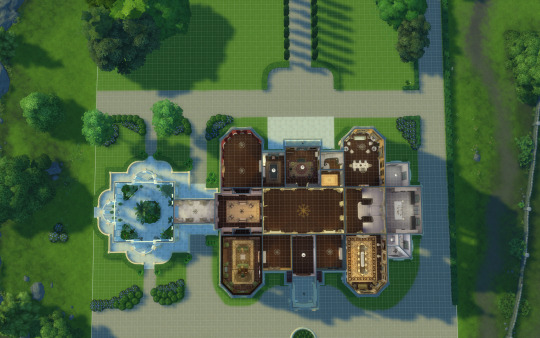
This house fits a 64x64 lot (You can fit the main building to the 50x50 or 50x40 lot if you lose the garden and conservatory)
I furnished just the principal rooms, so you get an idea. The rest is unfurnished so you create the interiors to your taste!
Hope you like it.
You will need the usual CC I use:
all Felixandre cc
all The Jim
SYB
Anachrosims
Regal Sims
King Falcon railing
The Golden Sanctuary
Cliffou
Dndr recolors
Harrie cc
Tuds
Lili's palace cc
Please enjoy, comment if you like it and share pictures with me if you use my creations!
Early access: 08/18/2024
DOWNLOAD: https://www.patreon.com/user?u=75230453
#sims 4 architecture#sims 4 build#sims4#sims 4 screenshots#sims4building#sims4play#sims 4 historical#sims4palace#sims 4 royalty#ts4#sims4life#sims 4 cc#sims 4#sims 4 legacy#sims 4 gameplay#thesims4#the sims 4#ts4cc#ts4 download#ts4 simblr#ts4 gameplay#my sims#sims community#simblr#ts4 screenshots#ts4 legacy
134 notes
·
View notes
Text

Stained Glass Window in the Boston Avenue Methodist Church, Tulsa, Oklahoma, USA
Completed in 1929
It is considered to be one of the finest examples of ecclesiastical Art Deco architecture in the United States.
Designed by a team, including architect Bruce Goff, of the Tulsa architectural firm Rush, Endacott and Rush, and Adah Robinson.
It was designated a National Historic Landmark in 1999.
Image via Waterford Rose
69 notes
·
View notes
Text
Did you know that the Catalan vault can be found in many buildings of the United States of America?
Here's some examples:

Grand Central Terminal, New York City. Photo from Getty.

Boston Public Library. Photo by Michael Freeman/Boston Public Library.

Ellis Island Registry Room, New York. Photo by Mike Ward on Flickr.

City Hall station of the New York subway. Photo by Michael Freeman.
The Catalan vault is a brick arch that is widely used in traditional Catalan architecture. It's also present in other parts of the Mediterranean, but not as common. Its main characteristic is that it's built with the longest side of the brick facing down (usually, ceilings are made with the shortest side facing down) and with a very gentle curve, resulting in a strong self-supporting vault that allows covering a whole room without needing columns or pillars in a way that would be impossible with other kinds of masonry, and also makes it possible to build it quickly and without needing centering (the wooden structure used to support the vault or arch while it's being built, and which is removed once it's made).
So how did it make its way to the USA?
It was brought by the Valencian architect Rafael Guastavino i Moreno (1842-1908). He had already designed important industrial buildings in Catalonia, including the factory that later became the Industrial School in Barcelona and La Massa theatre in Vilassar de Dalt, among others. At the time, in Catalonia, the Catalan vault was being widely used to cover ceilings in factories.
In 1881, Guastavino moved to New York City (USA), where he used the Catalan vault to cover big ceilings, which made him gain some fame for it. He patented the vault in the USA with the name "Guastavino system".
At the time, Americans were very worried about buildings catching fire, because it often happened and had caused a huge destruction in the Chicago 1871 fire. As a response, in 1883 Guastavino bought a patch of land in Connecticut, built two houses in it using the Catalan vault, and set them on fire. He took photos of the whole process to document it and prove how this architecture style is efficient in the case of fire. He wrote about it in the magazine Decorator and Furnisher and soon won the contest to design the Progress Club's building in New York City, which made him famous among architects in the area.
He created his own company (Guastavino Fireproof Construction Company) which was focused on building the Catalan vault. He was hired for many buildings and this architectural element spread. Most churches with stone vaults built between 1890 and 1940 in the USA were designed by Guastavino's firm, as well as many other buildings across the country, particularly New York and Massachusetts.
He's buried in the St. Lawrence Basilica in Asheville (North Carolina, USA), a building he designed.
#arquitectura#arts#història#architecture#new york#new york city#usa#architecture history#art history#guastavino#guastavino tiles#vault#beaux arts#modern architecture#north carolina#other countries#valència#país valencià#diaspora
64 notes
·
View notes
Text
A Realm Divided






























In the months following Margaery’s passing, the winds of change swept through the realm. A ship from Tartosa arrived, sent to retrieve Empress Mary and Princess Augusta and bring them back to their homeland. As the day of departure drew near, the quay of Windenburg Harbor became a hub of activity, with crowds of people gathering to bid farewell. Servants bustled about, preparing the cargo for the voyage, while the air was thick with a mix of melancholy and anticipation.
Augusta, poised on the brink of departure, offered a soft smile, her eyes reflecting a hint of nostalgia. “Windenburg will always be a part of me. But my path leads elsewhere now,” she said, her voice laced with both resolve and a touch of sadness.
King Edward, his gaze burdened with concern, responded, “I worry about what lies ahead. This kingdom, this land, is ever on the brink of something unexpected.”
Augusta met his eyes, her tone gentle but firm. “You’ve always been cautious, Edward. It’s why you’re a good king. But remember, you can’t control everything. Sometimes, you have to let the tide carry you where it will.”
Edward nodded thoughtfully, the weight of her words sinking in. “I know. It’s just that with you gone, it feels like one more anchor is being lifted. Mary… she will need you in Tartosa. But I’ll miss having you near.”
Augusta reached out, her voice filled with affection. “And I will miss you, brother. But you’re stronger than you give yourself credit for. Windenburg is in good hands.”
As the final words hung in the air, King Edward and Augusta embraced, the weight of their shared past and uncertain futures pressing close. Edward felt a pang of longing, but he was comforted by the warmth of his sister’s presence.
“We’ll meet again one day, won’t we?” Edward whispered, his voice tinged with both hope and reluctance.
Augusta smiled against his shoulder, holding him just a bit tighter. “Of course we will,” she replied softly, her words a quiet promise. “Nothing will keep us apart for long.”
In that moment, the world outside their embrace faded away, leaving only the solace they found in each other’s presence. As Augusta held her brother close, her smile lingered, a small yet unwavering beacon of the bond they would always share, no matter the distance.
Edward, Cordelia, and Prince Alvin stood on the beach, watching as the ship bearing Augusta and Mary slipped further from the shore. The vessel’s departure was more than just a farewell; it was a stark reminder of Edward’s pressing need to marry. With Augusta and Mary departing for Tartosa and Margaery now resting under Westsimster Abbey, his household had shrunk dramatically. The emptiness of the beach mirrored the hollow space left in his life, and Edward's thoughts turned grimly to the future. The necessity of finding a new companion to fill the void left by those he had lost weighed heavily on his mind.
As the years moved forward, Windenburg flourished under King Edward’s reign. The kingdom enjoyed a rare period of peace and prosperity, bolstered by strong alliances with Tartosa and Bagley. Edward’s reign saw a golden age of construction and growth. The city's skyline, once sparse, now boasted a profusion of buildings, homes, and churches, thanks to the kingdom’s immense wealth. Taxes were lowered, bringing contentment to the populace, who reveled in the stability and progress of their land.
The alliance with Bagley was fortified by mutual interests, and when Bagley Castle burned down in 1353, Edward generously supported the construction of Bagley Hall. The new royal residence was a marvel of architecture, surpassing its predecessor in grandeur and functionality. Within its walls, King Edward and King Henry of Bagley sealed their alliance with a treaty, their handshake marking the pact with both ceremony and finality.
Yet, as prosperity reigned throughout most of Windenburg, shadows loomed over Britechester Castle. In the spring of 1356, the death of Benedict, Duke of Britechester, cast a pall over the court. Princess Jane, now widowed for the second time, mourned her loss while preparing to face a new chapter. As the Chaplain’s prayers echoed through the halls, Benedict and Jane’s eldest son Richard, at just sixteen, grappled with the daunting responsibilities of his new title. The weight of leadership fell heavily on his young shoulders.
In the wake of Benedict’s death, Princess Jane and her youngest son, Robert, were conveyed to Windenburg Castle. Jane, enveloped in mourning black, felt as if the hand of fate was unrelenting in its cruelty. Her return to court was marked by a deep sense of foreboding Not long after, the court welcomed the Arnold family, returning after years of controversy surrounding Lady Dorthea’s death. Her younger brother, Philip, was bestowed the title of Count of Westfield in a grand public ceremony. Amid the festivities, Edward’s gaze was drawn to Adelaide, Philip’s eighteen year old granddaughter. Her striking beauty and spirited demeanor captivated him instantly.
As summer unfolded, Edward and Adelaide’s connection deepened. Their days were spent exploring the lush gardens of Windenburg Castle and riding horseback along moonlit shores. Their bond grew as they discovered shared passions and a profound emotional connection. For Edward, Adelaide became a beacon of joy and light, a match to his own soul in a world that had seen its share of darkness.
However, tranquility was soon shattered by turmoil in Bagley. In 1358, Lord Roderic Henford, once a trusted advisor to King Henry, ignited a rebellion against his sovereign. The insurrection, swift and brutal, caught Henry’s forces off guard, plunging the realm into chaos. Henford’s army executed surprise attacks on key positions, leaving widespread devastation in their wake.
Bagley's countryside became a relentless battleground, with Henford’s forces encircling the land and laying siege with ferocious determination. The once thriving kingdom was thrown into a state of upheaval, as Henford’s rebellion not only threatened the stability of Bagley but also jeopardized the broader alliances that had ensured peace for Windenburg. The conflict raged on, with heavy casualties on both sides, and the outcome teetered precariously.
At Windenburg Castle, King Edward convened an urgent council to address the crisis. King Henry sat beside him, visibly at a loss and burdened by the weight of his faltering kingdom. Edward, his brow furrowed with concern, offered his counsel, "You must fortify your defenses and seek out potential allies who can shift the balance of power. Strength and unity are your greatest weapons now."
Despite his attempts to provide guidance and support, Edward's words seemed to barely touch the depth of Henry's despair. The rebellion underscored how quickly peace could unravel, casting a long shadow over their hard-won stability. As the council session continued, Henry's silence became a palpable presence in the room, his eyes distant and lost in the weight of the crisis.
As the discussion wound down, Edward glanced at Henry, hoping for some sign of resolution or hope. Instead, he was met with the sight of him staring blankly at the council table, his grief so profound that it seemed to drown out any possibility of immediate action. The weight of their shared predicament pressed heavily on both of them.
#simsmedieval#royalsims#sims4#windenburg#sims#royal#gameofthrones#thesimsmedieval#royalty#simsstory#royal simblr#british royal family#royalsim#royalty sims#sims medieval#my sims#historical sims#sims 4#sims 4 gameplay#sims 4 screenshots#sims 4 cc#simblr#the sims#the sims community#ts4#medieval#middle ages#medieval europe#medieval art#renaissance
45 notes
·
View notes
Text
Carlos Diehz, the Mexican actor in “Conclave”, outlines his destiny
The architect, who plays a cardinal in “Conclave”, the Oscar-nominated film, is not interested in people recognizing him; it is enough for him to have played a character faithful to his principles.
Things haven't changed for Carlos Diehz. He continues to work happily as an architect in Vancouver, where he designs community centers, health centers and schools.
(...)
In Mexico, according to distributor Diamond Films, more than 700,000 people have so far seen Diehz playing Cardinal Benitez, a Mexican religious man who follows the ideals of the Church, caring for the needy and entering into tension with polar opposites.
(...)
His life hasn't changed a lot. Only one man recognized him at the airport the day after the Palm Springs show and congratulated him. Plus, there's the “threat” from his boss at the architectural firm.
“I'm still an architect, I started plan B 30 years ago (laughs) and it will be until acting requires me, until I have a full calendar year, that I leave it. Architecture is my first passion, it is a very rewarding career, we mainly design works that benefit society and take care of it. My boss already told me that if I get to have a lot of (acting) work, that we could do an agreement, but they wouldn't let me leave.
“If people don't recognize me, it's because I did well, that people see Cardinal Benitez. Yes, a selfie would be nice, but the satisfaction of having played the character who says the phrase: 'I am who I have always been', is gratifying”.
(...)
He now has an agent in Canada who is approaching him about possible projects. He was just part of an audition for something important that he can't elaborate on.
Source
Twitter Post
#Conclave#Carlos Diehz#the (...) indicates that there is more text but I didn't find it very interesting to post here#you can read all the article on the link :)#it is pay to read I think but you can go to a proxy site in order to have access to the article :9 DONT TELL ANYONE!#If you have access to buy the newspaper please do so!
12 notes
·
View notes
Text


For over four decades Helmut von Werz (1912-90) shaped and critically accompanied the architectural goings-on in Munich: with the founding of his architectural firm in 1946 Werz jumped into the maelstrom of postwar reconstruction, a heavily pressing task in the widely destroyed city, that called for the quick restoration of infrastructure, schools, hospitals and other public buildings. At the same time he also engaged in the discussion surrounding the reconstruction or radical demolition of historic buildings: in this context von Werz assumed the role of mediator who liaised between radical modernists and traditionalists. In this capacity he also was supported by Johann Christoph Ottow who had joined the office in 1952.
From the 1952 onwards the partners consecutively realized a number of exemplary schools, hospitals, protestant churches and office buildings that gained them nation-wide recognition. In view of the scope of projects the partnership in 1971 was extended to Erhard Bachmann and Michel Marx who then got involved in one of the firm’s landmark buildings: the Archäologische Staatssammlung in Munich, completed in 1975, and easily identifiable by its corten steel facade. Other major but occasionally criticized projects include the Bavarian Broadcasting building with its characteristic high-rise, the Parkstadt Bogenhausen and Hasenbergl housing developments as well as the „Ramses“ housing tower.
Against the background of his significant contribution to the architectural appearance of Munich the present monograph was long overdue: published by Birkhäuser in 2014 and edited by Cordula Rau & Georg von Werz it collects a large part of the architectural firm’s built work. Organized along typologies the book gathers a total of 25 realized projects, largely presented in historic photos, plans and current photographs by Florian Holzherr. Since almost every project is comprehensively documented the reader is able to discover one of the firm’s primary virtues, namely the attention to detail. The latter also holds true for the book which provides a concise and beautifully illustrated overview of a pivotal Munich firm’s architectural output. Warmly recommended!
#helmut von werz#monograph#architecture#germany#nachkriegsarchitektur#nachkriegsmoderne#architecture book#birkhauser#book
20 notes
·
View notes
Text
CHICAGO (JTA) — Earlier this month, 40 people gathered in Chicago’s Lawndale neighborhood to design a sukkah.
But they hadn’t come together only to build a hut for the upcoming Jewish festival of Sukkot, which begins on Friday evening and revolves around Jews erecting and dwelling in temporary structures for a week.
For this interfaith, intergenerational group, constructing the impermanent space was a step forward in what they hope is an enduring relationship between a Jewish community on Chicago’s North Side and a Black-led church on the West Side.
“Interfaith, interracial, cross-city, cross-neighborhood relationship building does not happen overnight,” said Rabbi Lizzi Heydemann of Mishkan Chicago, the Jewish prayer community partnering on the project. “It’s taken over a year for us to get together three times, four times. This sustained effort of people to continue to build relationships takes a long time.”
The sukkah project is part of the Chicago Sukkah Design Festival, which was launched last year and aims to build connections between the predominantly Black West Side community of Lawndale and the city’s Jewish community, which was once centered in that neighborhood. As part of the festival, which will take place in Lawndale from Oct. 1-15, architects partner with local neighborhood organizations to build the sukkahs, which are repurposed as permanent structures following the festival.
This year, six organizations are building sukkahs, which will later become sites ranging from a pavilion for meditation or a tool library. Mishkan is the only synagogue participating in the festival, and it is building its sukkah in collaboration with the Lawndale Christian Legal Center, a legal services initiative founded by the Lawndale Christian Community Church.
Through building the sukkah, which will later serve as a memorial to 41 victims of gun violence who were part of the legal center, the communities hope to reckon both with present tragedy and historical pain.
The sukkah’s design will address the departure of Jews from Lawndale during the postwar “white flight” era, when white residents left newly integrated urban neighborhoods en masse for the suburbs. Lawndale once had 60 synagogues and 75,000 Jewish residents. By the mid-1950s, only 500 were left.
“It’s a sad, hard, important-to-reckon-with piece of Jewish history in Chicago,” said Heydemann, who delivered a sermon on that topic to the church on a Sunday last year. That Sunday was also Tisha B’Av, the Jewish fast day that commemorates the destruction of the ancient Holy Temples in Jerusalem.
“There are people from the congregation who remember when Jews and Black people both lived in the neighborhood before Jews moved out of the neighborhood, and that was a powerful conversation,” said Diana Collymore, a deacon who has been active in Lawndale Christian Community Church since 2014. “That’s one of the strongest pieces that stayed with people. There were people from Mishkan who remembered what street the grandpa or mom or dad grew up on here.”
The communities are collaborating with two firms: Architecture for Public Benefit and Trent Fredrickson Architecture, whose architects also hope to honor that shared history and create something that is responsive to the community’s needs, backgrounds and experiences.
“One of the community members was talking about this old Jewish restaurant that now doesn’t exist anymore and whenever she would go there she would feel welcome and at home,” said Chana Haouzi, the founder of Architecture for Public Benefit. “We just spoke of feeling invited and like that you could stay as long as you like.”
The relationship between Mishkan and Lawndale Christian began when Heydemann and the church’s lead pastor, Jonathan Brooks, who is also known as Pastah J, participated in a program for early-career clergy at the University of Chicago Divinity School. They have spoken to each other’s congregations and hope for the sukkah-building process to bring their members closer together.
Members are already finding commonalities between the two congregations.
“The Jewish community that came here from Europe, they were driven here from trauma and harm, and the African-American community that came from the South in the Great Migration, they too were fleeing trauma,” Collymore said. “And both have faith and they believe in a God, and their faith brought them and encouraged them and directed them and kept them and settled them in this space.”
One way the communities are connecting and confronting the past is through shared scripture. The group designing the sukkah found meaning in a well-known passage from Ecclesiastes, which is read in synagogue on Sukkot and relates how there is a time and a season for everything under the sun.
The two groups studied the passage, interpreting and analyzing the Hebrew and translated versions. Its text will later be emblazoned on the sukkah’s walls in Hebrew script, transliterated Hebrew and English.
“There’s appreciation around that Ecclesiastes passage,” Collymore said. “Having scripture out of both of our faiths, and especially the kind of passage so appropriate for the way things have changed here, I think this is a catalyst for more deeper conversations.”
The sukkah will have three main walls, which will feature shelves lined with vessels that contain artifacts contributed by the community to share stories and create moments of connection. At one gathering, participants painted and decorated rocks with designs and messages inspired by the passage from Ecclesiastes.
“We’ve documented a lot of the discussion, and I think ultimately it was this idea of understanding how these two communities work together and seeing the points of commonality and the focus on loving and caring for each other and putting people first and also God,” Haouzi said. “It’s really that idea that ends up being manifested in the design itself.”
In addition, Mishkan members have participated in a walking tour of the church’s community spaces and initiatives. In addition to the health center and the legal aid center, the church has a fitness center, a café with a roof deck, an organic farm, a recovery center for men who were recently incarcerated or are in recovery, and other community programs.
“It’s important for predominantly white Jewish people who have been told that they’re not safe in parts of Chicago that don’t look white and Jewish, even if these parts of Chicago used to be their grandparents’ homes, to just come there and see that this neighborhood has incredibly interesting, dynamic people who live here and projects they’re taking on,” Heydemann said. “There’s an incredible amount of [the] neighborhood investing in itself and, beyond the neighborhood, outside people looking and saying, ‘How can we be part of that?’”
When the sukkah design festival opens, the church and Mishkan will host a shared prayer service for the community. They also hope the sukkah provides a space for both shared meals and independent reflection.
“Not only will it be a physical manifestation of this collaboration between both groups but it will also invite other people to join and to host both communities to continue building on their collaboration,” Haouzi said.
Heydemann says her community’s partnership with Lawndale Christian Legal Center has led to members becoming regular monthly donors to the center and reading books that speak to its work. When the sukkah becomes a memorial to victims of gun violence, it will stand in a memorial garden whose design is being led by the legal center.
Heydemann says she hopes that when Jews come to the Sukkah Design Festival, they will feel motivated to do something “to try to reverse the decades of disinvestment.”
“I would hope that Jews across Chicago come to the festival and feel a sense of reawakened connection to this neighborhood, whether or not they have family who ever lived here,” she said. “I would also hope that Jewish people would see the sukkot and understand their own tradition, Judaism, is this beautiful, dynamic, interesting platform for relationship building across traditions.”
59 notes
·
View notes
Text






November 10th 1839 saw the birth of Thomas Ross.
Ross became best known for the partnership of MacGibbon and Ross, who wrote comprehensive multi-volume books about Scotland's castles and churches.
If you haven't heard of the duo, I can be sure that you will have seen some of their drawings that were included in their books, I have posted many in the ten years I have spent posting about Scottish history.
Thomas Ross was the son of a farmer, also Thomas Ross, and Ann Murray. He was born at Wardheads, Errol, and attended local schools before going to Glasgow around 1855 to work as an assistant to architect Alexander Kirkland. He soon moved to the office of Charles Wilson, winning a measured drawing competition during his time there. He spent the proceeds on a study trip to Yorkshire, visiting Fountains Abbey among other sites.
In 1862 he began as an assistant to David MacGibbon in Edinburgh, and was made a partner in the firm of MacGibbon and Ross in 1872.
David MacGibbon and Thomas Ross, toured Scotland by train and on bicycles to record every extant piece of castellated architecture they could find. The result was a mammoth five volume work, The Castellated and Domestic Architecture of Scotland, published between 1887 and 1892. It has become the Scottish Castlemanianc's bible, to which all other books on the subject refer. As well as his drawings he also took photographs of architecture, most notably St Giles.
In 1908 Ross was appointed a founder member of the Royal Commission on the Ancient and Historic Monuments of Scotland, and “threw himself into its activities with enthusiasm”He was also Professor of Antiquities at the Royal Edinburgh Academy. He lived most of his adult life at in Saxe-Coburg Place in Stockbridge, Edinburgh .
Thomas Ross died at the age of ninety-one on 4 December 1930. and is buried in Comely Bank Cemetery.
Capital Collections has ten pages of his work here https://www.capitalcollections.org.uk/quick-search?q=thomas%20ross&WINID=1731258280005
#scotland#scottish#history#edinburgh#architect#artist#midhope castle#roslin castle#St Giles Cathedral
12 notes
·
View notes
Text

name: alexander “alex” perry (no relation to katy perry)
age: 32
birthday: january 22
zodiac: aqua sun, libra moon, virgo rising
place of birth: minneapolis, minnesota
occupation: architect
neighborhood: asbury bay
mbti: infp
pinterest
this is alex and he is the most beige human you could ever imagine.
he is THAT guy who considers “meal prepping” an extreme sport.
bio:
he’s from minnesota, which is like just a giant icy wasteland filled with nice, boring people who think a wild night is a trip to ikea (maybe that's what shaped his taste in interior design but we will get into that soon). his father frank is a civil engineer. his mother susan is an english teacher. he has a younger sister named amelia, who recently graduated from college. his parents' whole philosophy is hard work and practicality, which is just code for “let’s suck all the fun out of life.”
alex's dad richard was raised uber christian in small-town in lexington nebraska, but everything changed when he went to college. cue the culture shock: he met new people, encountered different ideas, and quickly realized the world wasn’t quite like the way he was told in his little church. he met susan, a free-spirited liberal who basically turned his worldview upside down. when they decided to get married, as you can guess, richard's family did not take that well and all hell broke loose. his family basically went all 'THIS IS THE FUTURE THE LIBERALS WANT!!!' route ofc.
because of this divine union, his dad has been banished from the good ol' conservative family circle. they probably think he’s gone to the dark side. he only keeps in touch with one of his cousins. (the one happens to be the father of alex's quirky cousin andrew. and andrew is a chaotic entrepreneur, who lives in silicon valley).
he is also cousins with miss dakota @dakota-perry
so it's safe to say they don't spend much time with his father's siblings. the Perry fam only visits them during holidays.....
little alex was the type who actually did his homework on time and actually got excited about things like mowing the lawn. so it wasn't a surprise when he graduated top of his class and got a scholarship to mit. he studied architecture because.... well, bc he had no other hobbies. and i guess alex wanting to become an architect ever since he was a middle schooler played a role in that decision too.....
he aced his courses, probably wearing one of those dreadful beige cardigans, and designed buildings that weren’t about to fall anytime soon. in MIT he was the one who did all the work in a group project while everyone else was off having a good time. not because he was a control freak, it's bc he actually loved architecture. nothing got his blood pumping like a well-drafted blueprint. and as you can guess, he wasn't exactly fending off crowds of admirers with his passion for structural integrity lsfkslafkalsf
alex in a group project:

after mit, he moved to new york cityyyyyyyyyyy (pls read that with laszlo's voice). he got a job at an architecture firm called thompson & rivera architects, a mid-sized firm with just the right amount of prestige without the snobbery. he had a little apartment in hell's kitchen. his place looked like someone took an ikea catalog, sucked out all the personality, and called it home. minimalist to the point of tragedy, with a potted plant that only survived because it couldn’t be bothered to die.
alex didn’t just wake up and decide to move to asbury for the fun of it(that would be far too spontaneous for the practical prince). his design firm, landed a new project: a modern, trendy boutique hotel in town. he was picked as one of the junior architects to join the senior architects in overseeing the project. he’s not the lead designer OBVIOUSLY, but he's definitely in the inner circle, making sure everything’s structurally correct.
personality:
alex is awfully practical, grounded, and a bit of a perfectionist. and he justifies this by saying "i’m not being picky, i’m being precise". alex's idea of a VERY WILD night would be marie kondo-ing his collection of architectural books and magazines. despite his boring demeanor, he actually has a sense of humor and SURPRISINGLY he can take a joke. to mingle with the local folks, he joined the local bowling team. tbh he’s not the most outgoing person, but he values deep, meaningful relationships over casual friendships. once he is your friend, that means it's going to last forever.
outside of work alex enjoys cycling. (actually a little bit too much, he is cycling around as if he is training for tour de france). and then there’s his cooking obsession. during quarantine, he got into cooking and suddenly became that person who binged every jamie oliver video in existence. next thing you know, he be baking his own sourdough.
well, he has 'mild' ocd. and when I say mild, that's actually an understatement. he is very particular when it comes to organizing his workspace—everything has its place, and he gets mildly irritated if someone moves his things. he’s known to be a bit of a coffee snob, always in search of the perfect cup, and can be annoyingly particular about his brew (as someone who does not know shit about the coffee, I wonder how am i gonna write about this little quirk but we shall see).
OH OH OH ALSO HE IS A HUGE FAN OF THE KILLERS
connection ideas
cycling buddy: soo this dumbass is in a cycling group called "the pedal -pushers," (so original, i know). the group is full of people who take their biking way too seriously. their conversations are not the most entertaining to be honest, such as the best tire pressure or which helmet brand is the best. alex usually shows up in full cycling gear, complete with a helmet with green reflective stripes. that was his way of celebrating the brat summer.
barista (friend or nemesis depending how much they can tolerate alex): a local barista and fellow coffee enthusiast who shares his love for a perfect cup of coffee. orrr simply hating him because he always finds some fault in his coffee.
bowling team / squad: he also recently joined a bowling team. i'd love to discuss the team name and its details, so feel free to hmuuuuu
10 notes
·
View notes
Text

By: Alex O'Connor
Published: Jun 19, 2024
In the apocryphal Gospel of Thomas, Jesus condemns those who “(either) love the tree and hate its fruit (or) love the fruit and hate the tree”. A regular critique of the nominally religious is that they claim to believe in, say, Christianity, but fail to act in accordance with its demanding message of love and compassion. They love the tree, but can’t quite swallow the fruit. More recently, however, a strange reverse phenomenon is emerging: a class of thinkers who, unable to rationally assent to the actual truth of Christianity, and yet disillusioned with the politics of “new atheism”, and fearful of the various religious and pseudo-religious ideas that have filled the vacuum it created, find themselves in the tough spot of being hungry for the fruit but unable to believe in the existence of the tree.
These so-called “cultural Christians” are appearing in droves: Douglas Murray, Tom Holland (not that one), Konstantin Kisin, Jordan Peterson (depending on what you mean by “Christian” and “cultural” and “and”); even Richard Dawkins — the archetypal modern atheist who has done more to confront organised religion than perhaps any other identifiable person in a generation — happily adopts this paradoxical moniker for himself.
Paradoxical because, of course, Christianity is more than just an affinity for evensong, disappointment with secular architecture, and suspicion of Islam. St Paul wrote in no uncertain terms to the Corinthians that “if Christ has not been raised, our preaching is useless and so is your faith”, and the vague, à la carte approach to the religion displayed by the “cultural Christian” which doesn’t seem to care about, much less affirm, the historicity of the extraordinary events of Easter Sunday is the kind of attitude that would see you condemned as heretical by the founders of the orthodox church.
Yet Christianity is experiencing a popular makeover, from an affirmative doctrine of truth-claims to a sort of protective garment to be worn as a practical measure against the equal and opposite destabilising forces of radical political religiosity and cynical nihilism which continue to claw away at the souls of those without a firm spiritual conviction.
This metamorphosis of the Christian religion in is many ways indebted to Tom Holland — not the actor, though perhaps an actor, in that he seems content to live as if Christianity were true — whose “Dominion” thesis has convinced a not insignificant number of intellectuals that the bulk of our celebrated Western ethics is ultimately the product of Christianity, an ideology which has so successfully embedded itself in our culture that we do not even notice it anymore.
This leads our cultural Christians, often those with a special interest in safeguarding Western civilisation, to cozy up to an ideology that they can’t quite adopt without qualification due to their rather inconvenient conviction that it isn’t true.
Enter Ayaan Hirsi Ali. Re-enter, I should say, as this brave apostate from Islam won successful prominence as an atheist writer and speaker for many years since the early 2000s, before recently announcing that she had embraced Christianity. Indeed, she had originally been scheduled to participate in that famed discussion in Washington D.C. in 2007 which gave birth to the “four horsemen” of new atheism — Richard Dawkins, Christopher Hitchens, Daniel Dennett, and Sam Harris. So news of the “almost fifth’s” conversion was met with widespread surprise, joy, and speculation.
Perhaps the most widely read response came from Dawkins, in an open letter whose first sentence contained a rather less than charitable: “Seriously, Ayaan? You, a Christian? You are no more Christian than I am.”
Why? Because Hirsi Ali’s article, while passionate and detailed, suffered from the exclusion of anything resembling an argument for the existence of God, or for the theological supremacy of the Christian religion over others (or even over atheism). Instead, it is a political treatise: it begins with her experiences as a Muslim, touching on 9/11, the Muslim Brotherhood, and antisemitism, before asking: “So, what changed? Why do I call myself a Christian now?”
She answers: “Part of the answer is global. Western civilisation is under threat from three different but related forces,” which she identifies as Russian/Chinese authoritarianism, Islamism, and wokeism. All of which are distinctly political considerations and so hardly serve as a theological defence of Christianity. Then, referring to Tom Holland, she tells us that the “story of the West” is a civilisation built on the “Judeo-Christian tradition”. That is to say, she is ticking all the boxes of a merely cultural Christian.
“Strangely, then, they could find initial agreement on one point: their being just as Christian as each other.”
Yet she later writes, as if anticipating this objection, “I would not be truthful if I attributed my embrace of Christianity solely to the realisation that atheism is too weak and divisive a doctrine to fortify us against our menacing foes.” It’s a promising interjection, which seems to ready us for an apolitical testimony that might justify her exclusion of the “cultural” in labelling her new Christian identity.
Here, Hirsi Ali begins to describe her personal struggles as an atheist. “I have… found life without any spiritual solace unendurable,” she writes, claiming that the “God hole” left behind after her deconversion was not filled with reason and intelligent humanism, as atheists like Betrand Russell had predicted, but instead left painfully vacant.
“In this nihilistic vacuum, the challenge before us becomes civilisational,” she continues. “We can’t withstand China, Russia and Iran if we can’t explain to our populations why it matters that we do.” In explaining, then, her reasons for becoming Christian apart from her desire to defeat her political foes, she tells us that she was struggling with a nihilistic vacuum that was… insufficient for defeating her political foes. Once again, the motivation seems political.
Thus Richard Dawkins and his assessment, “you are no more a Christian than I am”. The funny thing is, Ayaan Hirsi Ali endorses this sentiment. Dawkins has, of late, been airing his misgivings about gender theorists and Islamists, and constantly reaffirms his admiration for Christian art, architecture and music. These political and aesthetic preferences inspired her to refer to Dawkins at one point as one of “the most Christian” people that she knows. Strangely, then, they could find initial agreement on one point: their being just as Christian as each other.
This uneasy equilibrium provided the mise en scène for an eagerly awaited conversation between the two, which took place in Brooklyn last month. Dawkins tells us at one point that he showed up fully prepared to explain to Hirsi Ali why she is not a Christian: “The idea,” he says, “that the Universe has lurking beneath it an intelligence a supernatural intelligence that invented the laws of physics it invented mathematics […] is a stupendous idea (if it’s true) and to me that simply dwarfs all talk of nobility and morality and comfort and that sort of thing.”
He was, therefore, taken quite unawares, as were many of us, when he asked (or rather told) her, “You don’t believe Jesus rose from the dead, surely?” and she confidently replied, “I choose to believe that Jesus rose from the dead. And that is a matter of choice.” This, for Dawkins (as for me), changes the game. While throughout the event she had no hesitation in repeating her political grievances, in New York, she finally addressed the truth claims of Christianity, and appeared to confess a belief in them. “I came here prepared to persuade you, Ayaan, you’re not a Christian,” Dawkins told her, before correcting himself: “I think you are a Christian,” and — being Richard Dawkins — he added, “and I think Christianity is nonsense.”
This extraordinary event began with Hirsi Ali recounting her conversion: “I lived for about a decade with intense depression and anxiety self-loathing. I hit rock bottom. I went to a place where I actually didn’t want to live anymore but wasn’t brave enough to take my own life.” Through prayer, she managed to escape that hole. “My zest for life is back,” she declared to a healthy applause, indicative of the one thing that everyone can agree on: it is wonderful to hear that Ayaan is happy again.
She looked at Dawkins and shrugged slightly as she finished her personal account. And the audience laughed. I did think there was something comical about following such a moving story of escape from depression and anxiety with, as Dawkins did: “But do you really think Jesus was born of a virgin?” Dawkins, though, can hardly be blamed: as touching as Hirsi Ali’s story may be, if he is right that God’s existence is a scientific question, then we should remember that bringing personal narrative into the laboratory is as inappropriate an approach as bringing a microscope into a poetry seminar. It should be no insult to say that her emotional struggles are irrelevant to the question of theism vs atheism.
As Dawkins himself put it, responding to Hirsi Ali’s fear that an atheistic universe doesn’t offer us any way to connect with each other and the cosmos: “Suppose it were true that atheism doesn’t offer anything. So what? why should it offer anything?” Further applause.
“Faith offers you something, obviously. That’s very very very clear,” he says at one point. “But it doesn’t make it true. It doesn’t make the existence claims of Christianity true.” Again, there was an applause. Given that such a claim is hardly extraordinary or controversial, the clapping seemed to be less in support of the point, and more of Dawkins’s willingness to make it plain.
It is worth remembering that believing something for non-rational reasons is not unusual. Our beliefs are quite often formed by our surrounding environment, rather than some kind of perfect logic and analysis of abstract syllogisms. Most people know this. Hirsi Ali is happy to admit it. You may think it imperfect, but it is not unique.
“The kind of Christianity adopted by Hirsi Ali goes further in asserting its truth, but not very much further in its justification.”
This extraordinary event began with Hirsi Ali recounting her conversion: “I lived for about a decade with intense depression and anxiety self-loathing. I hit rock bottom. I went to a place where I actually didn’t want to live anymore but wasn’t brave enough to take my own life.” Through prayer, she managed to escape that hole. “My zest for life is back,” she declared to a healthy applause, indicative of the one thing that everyone can agree on: it is good to hear that she is happy again.
After finishing this personal narrative, she could only look at Dawkins and shrug slightly. The audience laughed, in anticipation of something of a shift in tone. I did think there was something comical about following such a moving story of escape from depression and anxiety with, “But do you really think Jesus was born of a virgin?” Dawkins’s decision to do so, however, can hardly be blamed: as touching as his former colleague’s story may be, if he is right that God’s existence is a scientific question, then we should remember that bringing personal narrative into the laboratory is as inappropriate an approach as bringing a microscope into a poetry seminar. It should be no more an insult to say that Hirsi Ali’s emotional struggles are irrelevant to the question of God’s existence than it would be to say to say that scientific observations are irrelevant to the study of Keats.
As Dawkins himself put it, responding to her fear that an atheistic universe doesn’t offer us any way to connect with each other and the cosmos: “Suppose it were true that atheism doesn’t offer anything. So what? Why should it offer anything?” Further applause.
“Faith offers you something, obviously. That’s very, very, very clear,” he says at one point. “But it doesn’t make it true. It doesn’t make the existence claims of Christianity true.” More clapping. Given that such a claim is hardly extraordinary or controversial, this reception seemed to be less in support of the point, and more of Dawkins’s willingness to make it plain.
Yet it is worth remembering that believing something for non-rational reasons is not unusual. Our beliefs are quite often formed by our surrounding environment, rather than some kind of perfect logic and analysis of abstract syllogisms. Most people know this. Ayaan Hirsi Ali is happy to admit it. You may think it imperfect, but it is not unique to her.
This means that any surge in Christian interest we may notice among our public intellectuals is unlikely to be due to a renewed interest in Biblical scholarship or the figure of the crucified Nazarene. It is instead likely a product of their environment. Cultural Christianity, then, is in many ways a political movement disguised as a religious one, reacting not to arguments for God’s existence, but concerns about the practical shortcomings of atheism and alternative religions. The kind of Christianity adopted by Hirsi Ali goes further in asserting its truth, but not very much further in its justification.
Therefore, those celebrating some alleged resurgence of Christianity ought be cautious: it would certainly be a happy day for them if their favourite intellectuals began discovering a relationship with Jesus, but if they begin converting to Christianity principally as an ideological bulwark, we may witness the return not of a meek and mild community of believers, but of a more strong-armed, aggressive Christianity that has historically been a touch more controversial.
But Ayaan does seem genuinely transformed by her new faith: she looks happy, speaks humbly, and seems genuinely uninterested in point-scoring or winning any arguments. It troubles me not at all to admit that I found myself applauding her more than Richard Dawkins. It transpired in Brooklyn that her conversion, which at first appeared mostly political, was more a result of her personal battle with nihilism. This is hardly going to convince anybody else to become Christian, but such personal experience isn’t ever supposed to.
Atheists are often told that they are plagued with a “God-shaped hole”. Hirsi Ali appears to have developed for herself a hole-shaped God. But despite the probability of at least an element of motivated reasoning in this conversion, I’m genuinely happy for her. We should keep in mind, too, as her story evolves, that our ideas are the most unclear to us when they are new, and Ayaan is a new Christian. While we are all trying to work out what she really believes, she is probably trying to work out the same thing. She, however, has the unusual courage to do it out loud.
==
In short, Xianity has retreated even further from "my religion is true" to "my religion is useful." Of course, if that's the case, then I have just as much right to pick and choose the parts that are useful to me as anyone else.
We must also apparently address once again the absurd notion of "choosing to believe," usually levelled at atheists as an accusation that they simply choose not to believe. In one specific god, of course. An accusation that necessarily means the believer themselves "chooses" not to believe in all the other gods.
And its absurdity revealed by the challenge to choose to believe in goblins or fairies or Bigfoot. Or to choose to believe in another god - Ahura Mazda, for example - for five minutes.

It matters what's true. And Xianity isn't true.
#Alex O'Connor#political christianity#god shaped hole#hole shaped god#choose to believe#christianity#Ayaan Hirsi Ali#Richard Dawkins#truth#truth matters#cultural christianity#religion#religion is a mental illness
14 notes
·
View notes
Text
Discover the significant relationship between faith and architecture with our hand-picked list of top church architectural companies at BBA-A. Find breathtaking designs that combine spirituality and craftsmanship to create sacred environments that uplift and inspire. Travel through a trip of architectural wonders that capture the soul of devotion, from little chapels to imposing cathedrals.
#bba-a#church architecture#modern church architect#Church Architecture Firms#church#architecture#texas#church architect near me
0 notes
Text
Title: Crown of Fire Fandom: Pillars of Eternity Rating: G Status: One-Shot Characters: Original Character (Nona) Additional Notes: Backstory for TTRPG Character, Family Drama & Betrayal, Leaden Key Recruitment Word Count: 1200 Summary: “You have been praying for justice, haven’t you? We are the true followers of Woedica. Justice is what we deliver.”
read below or here on AO3
State your name and purpose.
My name belongs to the gods and my hand to their service.
Even as a child, Nona spends many of her days in the temple. At first she is taken there by her mother, along with her baby sister Decima, as they go to visit her father while he works. But even as time passes, after her mother stops taking her (after Mother is gone), Nona still finds herself returning of her own accord.
It's a wondrous place, with grandiose architecture, chants that feel like magic, books and words and history memorialized in long rows of heavy tomes. More than that, the place carries a sense of belonging, of certainty, of rightness, and though at her young age she doesn’t quite yet have the words to express it, Nona feels it all the same.
Her father encourages her interest, of course.
“Would you like to become a priestess one day, Nona?” he asks with a smile. “You could lead the temple and help the erl in court, like I do. It’s a lot of work, of course, and you’ll have to study hard. But the priesthood runs in our family. It could be your calling just as it was mine.”
And Nona looks up with wide eyes at the crowned statue of Woedica, so resplendent and wise. Once again she feels that belonging, that certainty, that rightness, and she eagerly nods in assent.
What company do you seek?
I seek the company of shadows, that our labors may remain secret.
Nona knows what the papers say. She knows what they mean. But still she checks her work, over and over again, until she can no longer deny the truth.
Her father doesn’t believe her at first. “The erl would not be involved in such things,” he insists, but Nona shows him her research, all carefully documented and organized. It’s all there, undeniable proof of her suspicions and accusations.
Corruption. Deception. Even animancy experiments, the kind that have been outlawed in Aedyr for decades. Nona doesn’t know exactly how long it’s been going on, but it’s clear that the erl is using any means he has to collect a very forbidden type of power. More than that, it’s clear he has no intention of stopping, no matter how many of the gods' laws he breaks along the way.
It is the type thing the Church of Woedica simply cannot stand.
“Let me take care of this,” her father says. When Nona tries to protest, he stands firm. “You do not have the authority to convince the court of such things. I do. My voice will not be ignored. I will see that the right thing is done.”
And Nona, fool that she is, believes him.
Tell me of your labors.
To see that the craft of kith and wilder does not disturb what bones the gods have buried.
Nona knows everything has gone wrong when the guards come for her.
She does her best to keep calm, even as she hears the temple-goers whisper loudly, even as she sees Decima’s terrified face in the crowd. She tells herself that this is a simple mistake, and that her father will ensure everything is sorted out.
But her father only watches, stone-faced, as the erl reads out the charges of treason. And when the charges have been read, it is her father who declares her guilty.
“He is protecting you,” Decima tells her later, in the short time they have together before Nona must leave the city for good. “Had he done nothing, you would be facing execution rather than exile.”
She says this as if it is a good thing, and Nona has never felt such anger in all her life.
How do we know your purpose?
You shall know it by the confession of my tongue, the deeds of my hand, and the oath on my soul.
When the cloaked figures appear, Nona wonders for a moment if someone has finally been sent to kill her.
But the leader of the group, a woman with a stoic voice and sharp eyes, only smiles at her. “We’ve heard tale of a city,” she explains, “where a man rules through corruption and taints the land with animancy. We have heard of a Woedican priest who ignores his duties to The Queen That Was. And we have heard of you.”
Nona can only stare, speechless, and the woman’s smile widens. “You have been praying for justice, haven’t you? We are the true followers of Woedica. Justice is what we deliver.”
And how is your oath guarded?
“What are you going to do now?”
Nona is startled by the question, and by the reappearance of the hooded woman that she’d assumed would be gone by now. Perhaps she shouldn’t be surprised- they are standing in Woedica’s temple, after all. Where else would Her servants be?
“I don’t know,” Nona answers honestly, and tries not to show just how much that answer scares her.
“Are you not planning on returning to your place here?”
“Here?” Nona laughs, but there is no humor in her tone. “There’s nothing for me here. Everybody in this city either still believes the lies or hates me for revealing the truth.”
The words leave a bitter taste in Nona’s mouth, but they cannot be denied. Nobody wants her here. Even her sister- (and she thought Des, of all people, would understand, would always be on her side)- even her sister is furious at her for destroying the façade of respectability her father had built.
But Nona destroyed it anyway. At the very least, she helped. And now, because of her and these strange agents, the erl is dead and his followers have fallen with him. Some had attempted a surrender, had begged for mercy, but there is little mercy to be found in The Burned Queen's justice. Nona does not claim happiness at this, but there is a catharsis in knowing that the scales have finally been evened.
(Father had fallen to his knees, had been one of the men to beg, and that was when Nona knew he had never been worth of a place here.)
Lost in thought, Nona nearly forgets the other woman’s presence until, after a long moment, she says, “Come with us.”
Nona looks at her, surprised and slightly alarmed. “With you? Where?”
“Wherever we are needed,” the woman answers simply. Her eyes continue to study Nona as she speaks, although she never loses her steady tone. “The Queen always has a place for those who serve her well, and you have proven your faith.”
Nona opens her mouth to answer, but before she can speak the woman holds up a hand in warning. “Be aware- this is not a responsibility to take lightly. This life is difficult, and dangerous. There are many places that do not accept the worship of our Queen, let alone our work for her. If you are to do this, you must be certain.”
Nona takes a moment, and thinks about what she will be leaving behind, and what has already been lost, and whether it will be worth it to keep walking down this path. She does not need long to find the answer. “I am certain.”
It is sealed by the Leaden Key.
#fanfic#pillars of eternity#oc: nona#despite what i put her through i love nona so dearly <3#crown of fire
11 notes
·
View notes
Note
Saw your post about the church hunt and, not to be proselytizing on tumblr dot com, but...possibly you could consider giving a Catholic church a try? Like we've got the beautiful aesthetics you're looking for, and also our theology is rigorous. Obviously we do get unorthodox priests from time to time like any denomination, but they're the exception not the rule.
(I get I'm trying to pitch Catholicism to a reformed presbyterian here, but it does sort of sound like we would tick all the boxes you're looking for... anyway, you can't blame a girl for trying right?)
Either way, best of luck in your hunt and I truly hope you find a church that meets all your spiritual needs. :)
I do get where you're coming from, friend, and I definitely respect the hustle! But, in the nicest way possible: no.
When I talk about rigorous theology, I do mean "well-developed, comprehensive, firm, clearly informs the preaching and the way the church is run" and Catholic theology is certainly that. But I also want theology that accords with my convictions regarding Biblical truth, and for that reason I just can't get down with the Catholic church.
I do love a good Catholic choir, though! And just generally, I love the feeling of reverence that I get when I enter a Catholic church. There's a long history of worshipping through art and architecture that really makes you feel like you're entering into a space set aside as the House of God. I think a lot of Protestant churches forget that churches are supposed to be special and precious, you know? The focus on austerity comes from a worthwhile place, but not for nothing did God tell the Israelites to build the Ark out of gold.
#thank you so much for the well wishes!#i do hope this came off kindly and politely as intended#i have so much love for my Catholic brothers and sisters. i just think you guys are wrong about some important things#you do really /get/ the idea of sacred spaces though. hats off on that#ask me hard questions#new adventures#church hunt
22 notes
·
View notes
Text
FDR the Art Collector
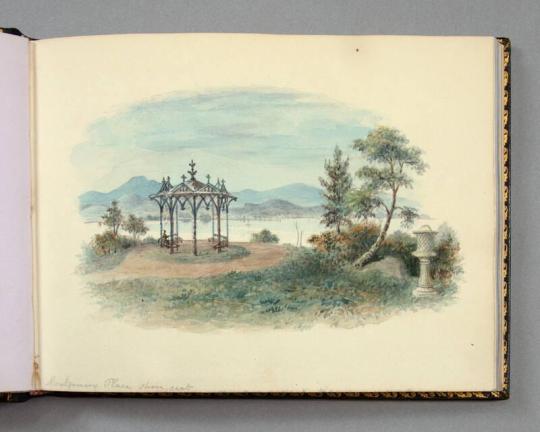
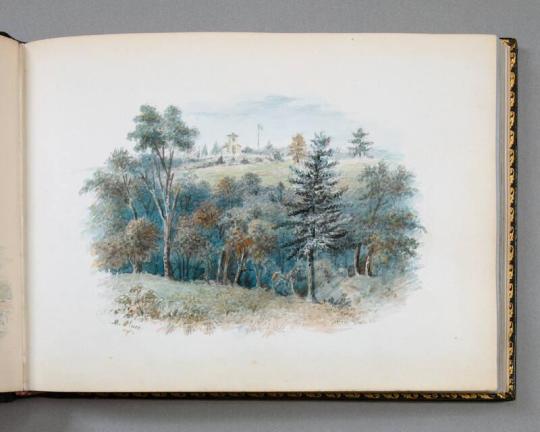

This undated sketchbook contains watercolors and pencil drawings by Alexander Jackson Davis (1803-1892), one of the most prominent American architects of the nineteenth century.
Davis began his career in New York illustrating various buildings in the northeastern United States. In 1829, he started his first architectural firm, Town & Davis, with partner Ithiel Town, and then later opened his own firm. As one of the most prolific American architects of the nineteenth century, Davis designed buildings all over the US, including government buildings, commercial buildings, churches, and private homes. He favored Gothic Revival, Greek Revival, and Italianate styles. He also designed interior elements and even furniture.
Franklin D. Roosevelt purchased the sketchbook in February 1942—two months after Pearl Harbor and amid some of the darkest weeks of World War II.
This acquisition illustrates two important things about Franklin Roosevelt. He had an extraordinary ability to compartmentalize his life—using hobbies and personal interests to help himself manage the many stresses of the presidency. And he had an abiding love of and interest in the history, landscape, and culture of the Hudson River Valley.
Shortly after purchasing the Davis sketchbook, FDR shipped it to his distant cousin, Margaret “Daisy” Suckley, an archivist at the Roosevelt Library, to be added to his collection of Hudson River Valley art and artifacts. “I bought this several days ago,” he wrote Suckley, “and it should go to the Dutchess County collection as a loan. Some of the watercolors are really lovely.”
See more sketches by Davis on our Digital Artifact Collection: https://fdr.artifacts.archives.gov/objects/1944
Join us throughout 2023 as we present #FDRtheCollector, featuring artifacts personally collected, purchased, or retained by Franklin Roosevelt, all from our Digital Artifact Collection.
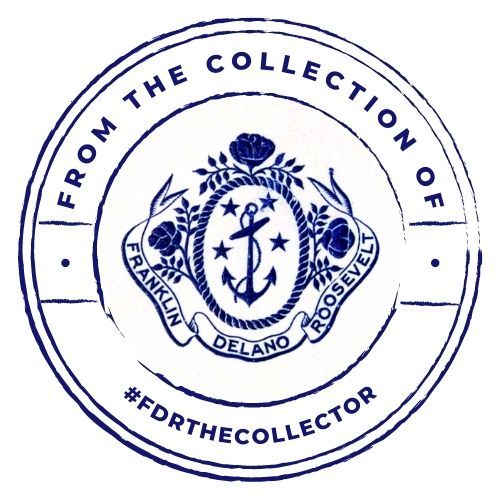
#fdr the collector#Alexander Jackson Davis#fdr#franklin d. roosevelt#hudson valley art#architectural art#museum from home#artifact collector
9 notes
·
View notes
Text
Drawing With a Purpose, By Michael Graves
I always drew with a purpose, documenting what I wanted to study or remember. The Magna Graecia town of Paestum, Italy, contains two famous Greek temples that most architects draw in perspective to capture their picturesque character. Instead, I drew the Temple of Juno frontally, in elevation, which allowed me to study the proportions of the columns and the spaces between them.
In addition to large ink drawings, I made quick sketches in pencil on creamy clay-coated paper. Here, at St. Peter’s in Rome, I continued to explore my interest in how paired columns create a frame for the view beyond. In this drawing, the foreground of the columns and the background of the church establish a middle ground, focusing our attention on the fountain.
Rome, of course, is full of ruins, which I find fascinating for two reasons. First, the eroded surfaces reveal how the buildings were constructed. Second, the remains lead to speculation about the original form of the buildings. In my 1961 drawing of the Domus Augustana, I was trying to convey both what currently existed and what the original architecture might have been like.
When I returned from Italy, I joined the faculty of the School of Architecture at Princeton University, where I taught for 39 years, always encouraging my students to view drawing as an essential part of conceptualizing architecture. I identified three types of drawings: the “referential sketch,” the “preparatory study” and the “definitive drawing.” The referential sketch records something that I want to remember, such as the stacked composition of this tower by the French neo-classical architect Jean-Jacques Lequeu, which I recorded from a book.
Referential sketches for me serve as a kind of visual diary, whether they became associated with an architectural project or not. My sketch of a 1561 drawing by Pirro Ligorio of antique Rome records archetypal geometric forms as a paradigm for architectural compositions.
My referential sketches sometimes became the inspiration for architectural projects, as well as a way to communicate to my colleagues in the office, and even to my students. I drew a partial plan of a garden in Rome to emphasize the way that the form and axes of the adjacent building shape the space of the garden. On the same page is a plan diagram for the Plocek House, which similarly engaged the landscape in an axial manner.
My design practice is not limited to architecture but also engages interiors and product design. I therefore am always looking at the composition of furniture and objects as references. I was intrigued by an American federal period chair that I saw in a friend’s home in Providence, R.I., particularly by how the flat surfaces of the edges contrasted with the curvilinear forms of the arms, legs and back. I wanted to remember that tension, which spoke to how the chair was fabricated as well as to its aesthetic character.
The second type of drawing that I have identified is the “preparatory study.” These drawings typically involve iterative studies that lead to a final design. I might, for example, draw several options for how the glass shade of a lighting sconce would be supported on a metal bracket, and how the bracket might be attached to a wall, drawing them in profile so that I could study the proportions.
In preparatory studies of architecture, I am fond of drawing on translucent yellow tracing paper, as it offers the opportunity to layer one drawing on top of another. The resulting progression of compositional ideas is fundamental to the design process. Alternatively, I might draw a simple sketch, like this one of the Denver Central Library, on a computer tablet. Whether on paper or on the computer, I find that the connection between mind and hand is a compelling way to conceive buildings or objects.
Eventually, preparatory studies become more complete and firm as they are carefully measured to scale. In a series of drawings of the south side of the Denver Central Library, I studied the proportions and coloration of several areas of the facade. This allowed me to work out the compositional problems in a definitive way.
The third type of drawing that we architects and designers typically produce is what I call the “definitive drawing.” It finally fixes and describes the building, and today is typically produced on the computer. This plan of the Denver Library shows the furniture layout, an indication of how the building would be used. A more developed version, without the furniture, might show the contractor what he needs to build.
Since my paralysis nine years ago, I travel less frequently than I used to. I still draw – and also paint – all the time. I am particularly fond of creating drawings of remembered places. Many of the ink drawings in my sketchbooks depict buildings arranged within landscape; their relative positions on the page imply where they might exist in linear space.
My thoughts and recollections of Tuscan landscapes are inspired by my sketchbooks, and I make painting after painting of this theme. Like the modern Italian painter Morandi with his compositions of bottles, I habitually juxtapose buildings that originally would not have been seen together in order to achieve new compositions.
The 18th century Italian architect Piranesi drew buildings in a didactic manner to show his contemporaries the Roman method of building as it was revealed in the ruins throughout the city. I, too, became fascinated with methods of Roman construction and also with the romantic spaces that ruins provide as they are washed with light. from New York Times
0 notes